The Chernobyl disaster of April 26, 1986 in Pripyat, Ukraine remains the most catastrophic nuclear accident of the 20th century.
The Chernobyl disaster of April 25 and 26, 1986, was the most catastrophic nuclear accident of the 20th century. It has shaped and inspired nuclear policy, influenced environmentalist and activist groups, and left a direct, physiological impact on Pripyat, Ukraine and the Eastern European regions it contaminated.
The event happened due just as much to negligence as inevitability — with no fail-safes to prevent radiation from escaping in case of an accident, improperly trained personnel, and no enacted safety measures to ensure that those mistakes wouldn’t occur in the first place, the disaster was arguably lying in wait.
When a late-night safety test went awry and subsequent human error interfered with preventative measures, Chernobyl’s Reactor 4 became unmanageable. Water and steam merged together which lead to an explosion and a resulting open-air graphite fire. Two plant workers died that night and arguably suffered the least out of all those who eventually died from radiation or grew up with birth defects.

PixabayThe Pripyat Amusement Park was set to open on May 1, 1986 — a week after the Chernobyl disaster.
Over the next few days, 134 servicemen involved with the clean-up in and around Pripyat were hospitalized, 28 died of acute radiation syndrome (ARS) in the following weeks, and 14 died of radiation-induced cancer within the next ten years. Indeed, the complete effects the disaster had on the health of the public in Pripyat and the surrounding area is still not totally known.
A simple miscalculation in safety measures during a late-night test quickly became the biggest nuclear disaster of the modern era. Brave souls on the ground sacrificed everything to stop it as the rest of the world watched in horror. 33 years later, the radioactivity of the Chernobyl disaster still lingers.
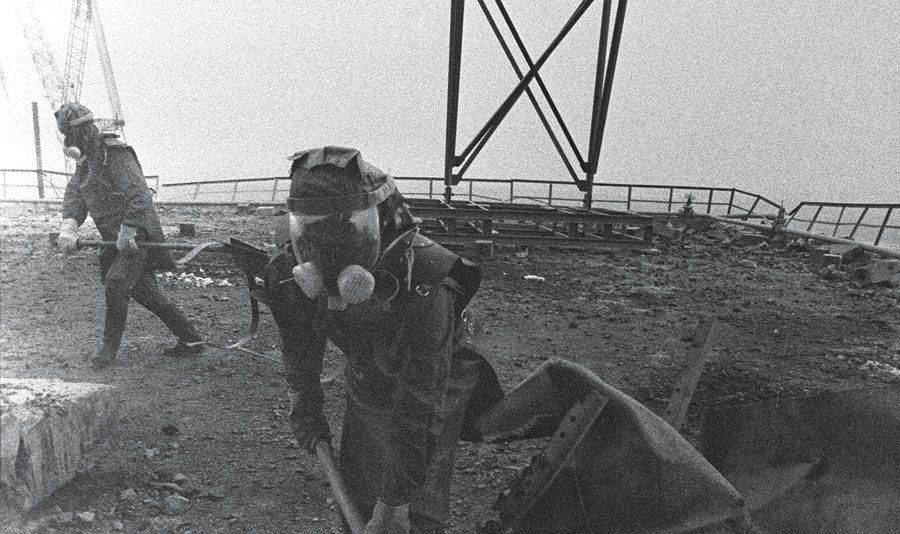
MIT Technology ReviewEmergency workers cleaning up radiated materials with shovels in Pripyat, 1986.
Ground Zero: A Timeline Of Events That Led To The Chernobyl Disaster
The accident occurred a full year before President Reagan famously ordered USSR General Secretary Gorbachev to “tear down that wall.” The Pripyat Amusement Park was set to open on May 1st as part of the May Day celebrations, but that opportunity never came.
It was 1:23 A.M. local time when Reactor 4 suffered a fateful power increase too high to handle. This was before nuclear reactors were encased in a now standardized, protective containment vessel.
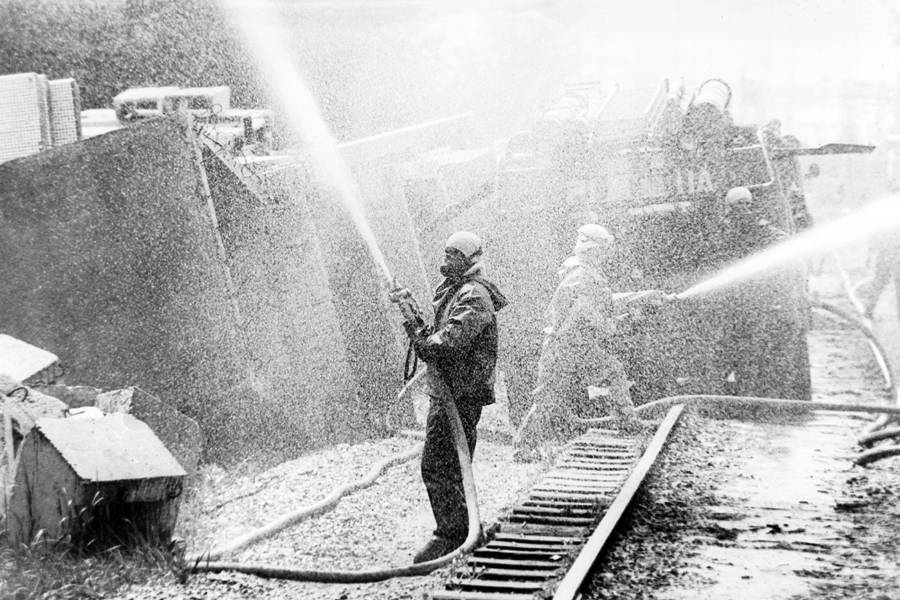
Vitaliy Ankov/RIA NovostiWorkers hosing the plant down with a decontaminant, 1986.
Chernobyl’s failings allowed vast amounts of radioactive isotopes to billow out into the atmosphere, covering parts of the Soviet Union, Eastern Europe, Scandinavia, the United Kingdom, and the American east coast in varying amounts of fallout.
Areas closest to the site, like Pripyat, were affected most drastically, with Ukraine’s capital Kiev receiving around 60 percent of the fallout while a significant amount of Russian territory sustained considerable contamination as well. UNICEF estimated that over 350,000 people evacuated their homes in Pripyat and far beyond between 1986 and 2000 specifically due to Chernobyl’s after effects.
The Design Flaws And Misuse Of Reactor 4
The Soviet Union’s Chernobyl nuclear plant is about 65 miles north of Kiev on the banks of the Pripyat River. The town of Pripyat or Prypyat was founded in 1970 to serve the nuclear plant specifically as a closed, nuclear city. It only became an official city nine years later.
But today, save for the startling emergence of wildlife, Pripyat remains a ghost town.
Chernobyl had four reactors and each was capable of generating 1,000 megawatts of electric power. For context, the California Independent System Operator which oversees the bulk of the state’s electric power system, says one megawatt is capable of producing enough electricity for the instantaneous demand of 1,000 homes at once.
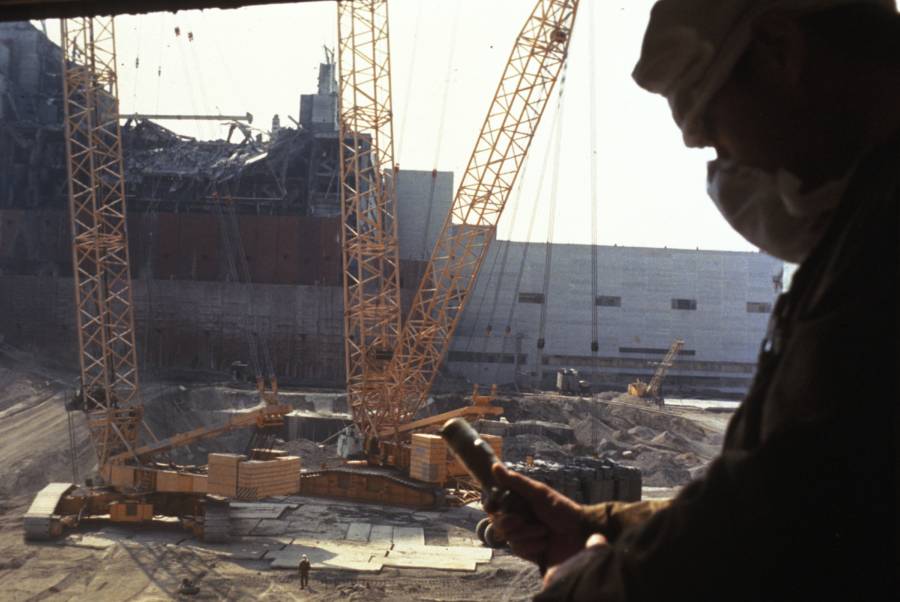
Sovfoto/UIG via Getty ImagesRecording radiation levels during construction of a new sarcophagus for Reactor 4, August 1986.
Chernobyl’s four reactors were different than most others worldwide. The Soviet-designed RBMK reactor, or Reactor Bolsho-Moshchnosty Kanalny meaning “high-power channel reactor,” was water-pressurized and intended to produce both plutonium and electric power and as such, used a rare combination of water coolant and graphite moderators that made them fairly unstable at low power.
If the reactors lost cooling water, they’d dramatically decrease power output which would rapidly facilitate nuclear chain reactions. What’s more, the RBMK design didn’t have a containment structure which is exactly what it sounds like: a concrete and steel dome over the reactor itself meant to keep radiation inside the plant even if the reactor fails, leaks, or explodes.
These design flaws compounded with the staff of untrained operators made for the perfect storm of Nuclear failures.
The rather inadequately trained personnel working on the Number 4 reactor late that night on April 25 decided to complicate a routine safety test and conduct an electrical-engineering experiment of their own. Their curiosity of whether or not the reactor’s turbine could operate emergency water pumps on inertial power, unfortunately, got a hold of their judgment.
First, the team disconnected the reactor’s emergency safety systems as well as its essential power-regulating system. Things quickly worsened when they set the reactor at a power level so low that it became unstable and removed too many of its control rods in an effort to regain some control.
At this point, the reactor’s output reached over 200 megawatts. At that fateful hour of 1:23 A.M., the engineers shut the turbine engine off completely to confirm whether or not its inertial spinning would force the reactor’s water pumps to kick in. Tragically, it did not. Without the requisite water-coolant to maintain temperatures, the reactor’s power level spiked to unmanageable levels.
https://www.youtube.com/watch?v=C8baB4Tj7NI
The Chernobyl Disaster
In an effort to prevent the situation from rapidly getting worse, the engineers reinserted all the control rods — about 200 — taken out earlier in the hopes of recalibrating the reactor and bringing it back to reasonable levels. Unfortunately, they reinserted those rods all at once, and because the rods’ tips were made of graphite, this set off a chemical reaction which resulted in an explosion that was then ignited by steam and gas.
The explosion ripped through the 1,000-metric-ton concrete and steel lid and reportedly ruptured all 1,660 pressure tubes as well — thereby causing another explosion that ultimately exposed the reactor core to the world outside.
The resultant fire allowed more than 50 tons of radioactive material to waft into the sky where it was inevitably carried away and spread across the continent by wind currents. The graphite moderator, leaking radioactive material, burned for 10 days straight.
It didn’t take long for the Soviets to order an evacuation of Pripyat’s 30,000. Authorities scrambled to problem-solve their way out of the fiasco on their hands and began with an attempted cover-up that failed a mere day later. Sweden’s radiation monitoring stations over 800 miles northwest of Chernobyl detected radiation levels 40 percent higher than standard levels just a day after the explosion. The Soviet news agencies had no choice but to admit to the world what had happened.
The amount of radiation relinquished into the skies from the Chernobyl disaster was several times that of U.S. atomic bombings on Hiroshima and Nagasaki. With the help of global air currents, the nuclear disaster affected Eastern and Northern Europe and contaminated millions of acres of pristine farmland in the region.
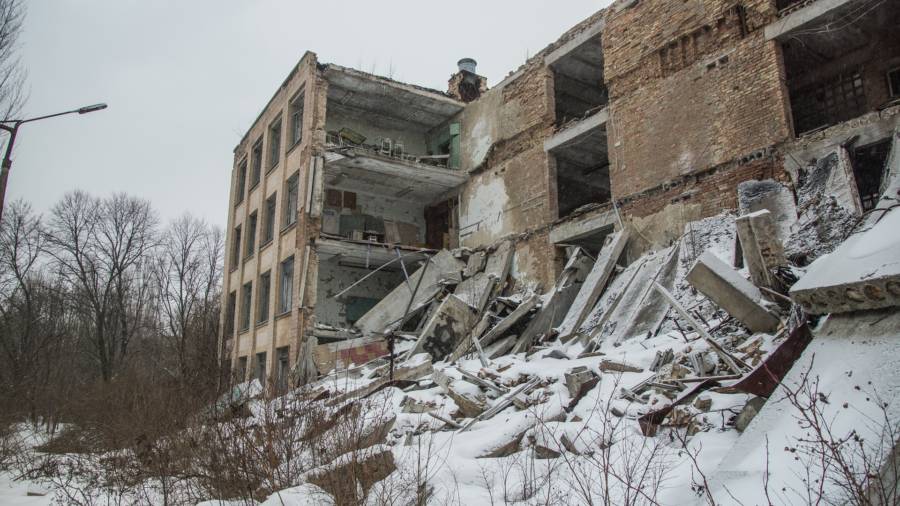
PixabayA crumbling school building in Pripyat, 2018.
The “Suicide Squad” Makes A Sacrifice For The Greater Good
Unbelievably, the events of the Chernobyl disaster could have been even worse if not for real-life hero Aleksandr Akimov and his brave team.
Akimov was the first to declare an emergency in the plant as soon as the reactor was shut down, though by then the damage had already been done. He realized too late the extent of the damage; already the reactor had exploded and began to leak extremely high levels of radiation.
Rather than evacuate the plant as the explosion ensued, Akimov stayed behind. He and his crew of Valeri Bezpalov, Alexi Ananeko, and Boris Baranov entered the reactor’s chamber in waist-high radioactive waters beside the exploded reactor to release water. Bezpalov, Ananeko, and Baranov comprised a ‘Suicide Squad’ that descended into the water even deeper to turn on the emergency feedwater pumps to flood the reactor and stave off the release of more radioactive materials.
They manually pumped emergency feedwater into the reactor without any protective gear. The work of the engineers ended up costing them their lives from radiation poisoning, but they dramatically changed the impact of the disaster. Their sacrifice saved countless others from a resulting fallout that would have covered most of Europe.
The Toll Of Cleanup Operations In Pripyat
While the physical illnesses and disease were reportedly difficult to specifically tie to the disaster itself, the short- and long-term efforts to minimize any harrowing consequences were substantial.
The initial explosion resulted in the death of two workers and 28 firemen and emergency clean-up workers, including 19 others, died within three months of the explosion from Acute Radiation Sickness (ARS). Around 1,000 on-site reactor staff and emergency workers were heavily exposed to high-level radiation as well as more than 200,000 emergency and recovery operation workers.
Managing Reactor 4 proved more difficult and complex compared with the relatively basic task of moving people from one place to another. Soviet estimates have calculated that 211,000 workers took part in the cleanup activities during the first year with anywhere between 300,000 and 600,000 people participating within the first two.
Evacuations began 36 hours after the incident with Soviet authorities having successfully relocated everyone in the 30-kilometer exclusion zone within a month. About 116,000 people had to pick up their things and find new homes — or potentially die from radiation-induced illnesses.
But a 2005 United Nations Report maintains that “the largest public health problem created by the accident” was its effect on the mental health of the 600,000 people living in areas impacted by the event.
The Nuclear Energy Institute claimed Chernobyl’s failings resulted in about 4,000 cases of thyroid cancer, with some deaths occurring as late as 2004 — while the UN study argued that less than 50 deaths could be guaranteed to have resulted from the event’s radiation exposure.
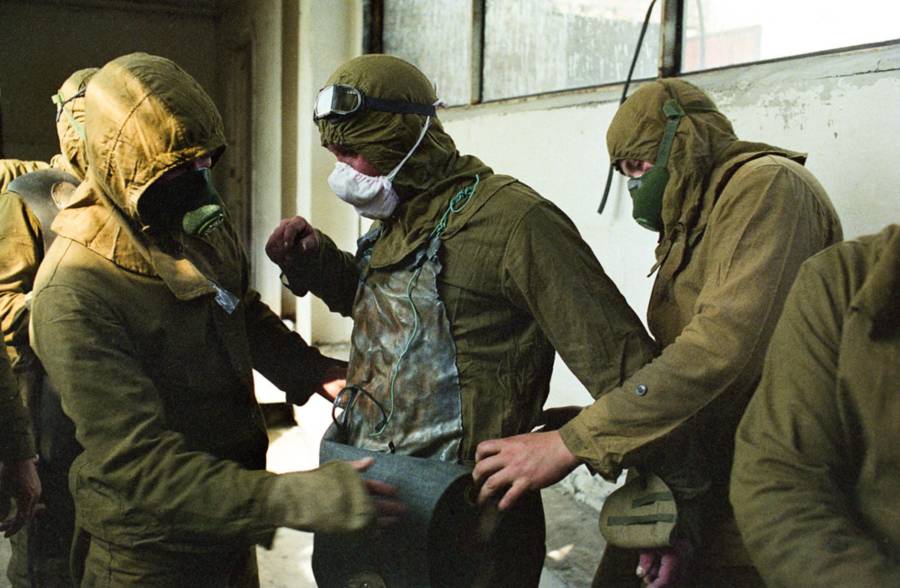
IGOR KOSTIN, SYGMA/CORBIS“Liquidators” preparing for cleanup, 1986.
Children in contaminated areas were given high doses of thyroid medication in order to combat the increase in radioiodine — a contaminant isotope that had seeped into the regional milk. This isotope had a half-life of eight days. Meanwhile, the soil was found to be contained by cesium-137 — which has a half-life of 30 years.
The efforts appeared to be to little avail. Numerous studies found that the number of thyroid cancer in children under 15 years of age in Belarus as well as Russia and Ukraine in general, showed a steep, concerning spike. Many of these children had developed a particular form of cancer from drinking milk — as cows grazed on contaminated soil, and produced contaminated milk.
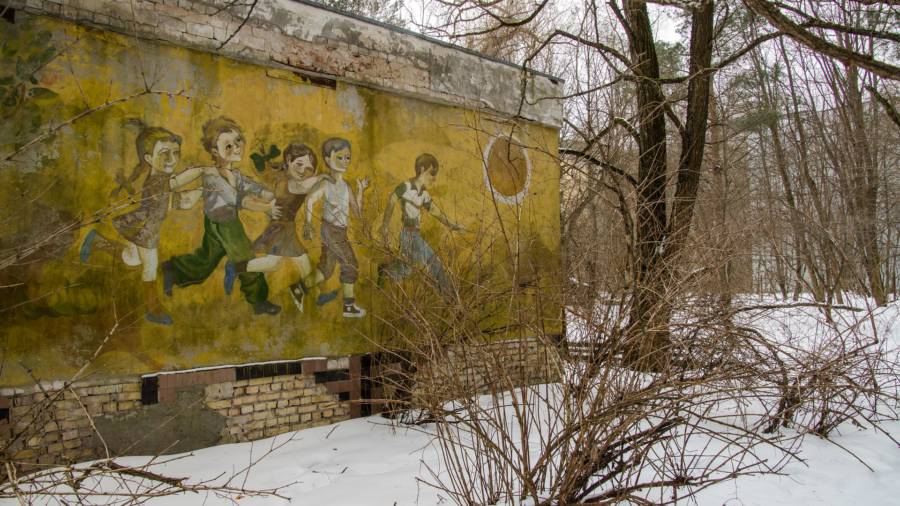
PixabayA mural in Pripyat depicting children before the meltdown, 2018.
It hadn’t yet become clear, in the frenzy of day to day cleanup operations in those first months following the Chernobyl disaster, but an entire generation of children would grow up permanently changed by the event.







